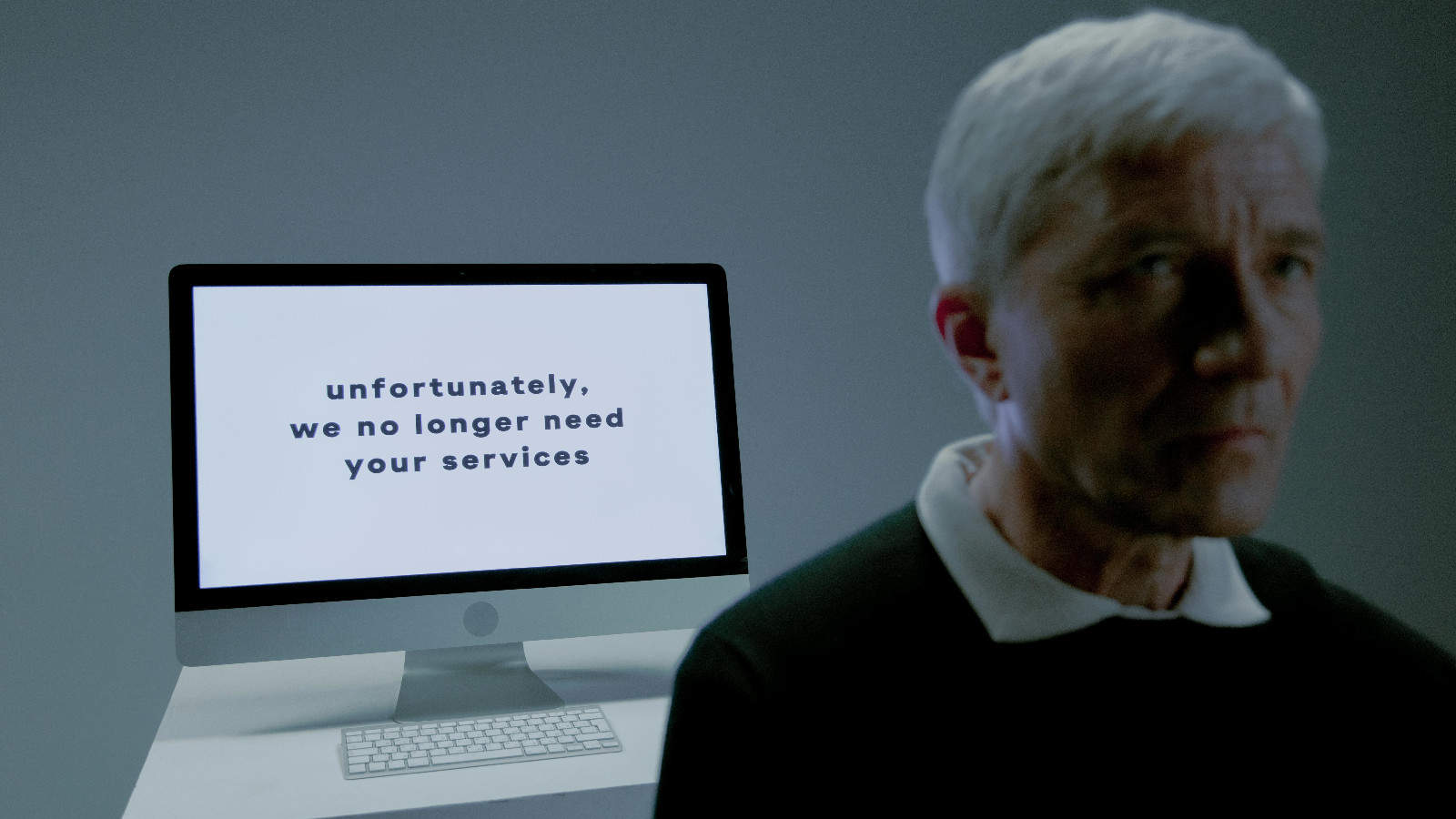Artificial Intelligence, the technology that will lead humanity either to a technological utopia or to hell in a handbasket. We’re at the point in AI development where either reality could come true. AI is fire, and we’re all cavemen about to learn both its constructive and destructive potential. While CEOs and spokespersons of the major companies developing AI try their best to assure us that their flavor of the technology is safe, it’s those very companies that make AI less than safe.
Obviously, we can’t speak for ALL companies, but we can shine a light on the biggest whales in the pond. These include companies like Google, Meta, OpenAI, and Microsoft. Companies like Anthropic, Perplexity, and Apple matter, but the aforementioned companies are some of the ones making the biggest moves in the AI market. Sure, Apple is a MASSIVE company, but for the time being, it’s still a hardware-first company; it hasn’t made any major moves in the AI market just yet.
AI technology was never going to be safe, let’s face it. Gears are turning, and have been turning for a while, that basically eliminate any possibility of that happening.
Just another profit-driven rat race
We all like to think that AI is being pioneered by massive nerds who just want to make the world a better place. While Sundar Pichai, Sam Altman, Satya Nadella, and Mark Zuckerberg are nerds, they’re CEOs first and foremost. This means that the main focus is making sure that their AI is profitable. They need to keep the investors happy, as always. So, releasing the newest and flashiest AI trumps making it actually safe.

AI is just another profit-driven rat race, and this brings all of the classic pitfalls. As much as we like to believe the lines that we hear during the keynotes, the fact of the matter is that safety just isn’t the priority. Safety doesn’t only mean crafting AI technology that doesn’t produce inaccurate or racist content. Safety also pertains to keeping an AI tool from taking jobs en masse.
We’re already seeing AI search engines and tools like Google’s AI Overviews taking over the space. Any moron can see how tools like these can devastate countless businesses around the world. Well, guess what, OpenAI is now competing with Google, and vice versa. Also, both of those companies are competing against Perplexity. They’re already locked in a heated battle over this market, and now it’s a mad dash to make their tools more useful. It’s unlikely that any company is going to back down for the sake of the businesses and people affected by this. Nope! Now, it’s time for the companies to buckle down and make the most user-friendly AI search engine to spite the competition.
Companies can’t prioritize safety at this point because they need to make their AI tools more useful and popular than the competition. If they can’t, then their investors will take their dollars elsewhere.
Prioritizing safety means taking a step back and asking how people will be negatively affected by a technology. However, we’ve been seeing some pretty sleazy moves by these big AI companies. We’re seeing companies like RunwayAI, Meta, and Alphabet (basically Google) going to Hollywood and other film studios to use their licensed media to train their AI video generators. This technology is poised to put thousands of people in the film industry on the street, but companies need data to make their models the biggest and best on the market. To hell with the people!
Without proper regulation, AI companies are free to pull out all the stops to make sure their AI is the best, and there’s no one to stop it.
What about the other companies?
The companies making the AI are some pretty bad players, but we can’t forget about the companies using the AI. The moment we saw some of ChatGPT’s abilities, one of AI’s worst traits became apparent. This technology gives companies the ability to clear out workers left and right. Should we really be surprised? Most big businesses won’t hesitate to cut entire teams of people if it means that they can maximize profits, and this has been true since LONG before AI existed. As newer technologies launch that bring added efficiency, companies shed their human workers to maximize their profits.
Well folks, guess what AI is. That’s right! It’s a new technology that brings added efficiency. “Why pay a team of writers when two people could just have ChatGPT pump out articles at twice the speed?” “Wait, this AI tool can simulate a real call center agent? Why do I need humans on the phones?!” “I don’t get why I need to bring a crew of filmmakers on set when I can just generate these shots.”

There are several companies out there that have not sold out to AI and still employ human work, but those companies have to share space with profit-hungry mega-corporations. We’re already seeing AI tools that make several roles in several industries obsolete. What’s worse is that we’re seeing people being let go left and right. Artists, writers, composers, and other workers are being let go because pushing out AI-generated slop at a fifth the time and price is more important than human beings. With the way that big businesses have been historically, there was no way that AI wasn’t going to put people on the street by the boatload. As AI technology gets more advanced, we’re going to see this trend continue.
Let’s not forget about the money
Guess how much money these major corporations have made off of AI technology. $0.00. Currently, AI technology is a massive financial loss for the companies involved. This applies to the companies training the AI models, not the smaller businesses that use these models.
The main reason why these companies are struggling to turn a profit is that training their models costs a ton of money. That’s one of the biggest expenses and, as you can imagine, it’s been going up over the years. As we reported (via Epoch), the cost of training AI models has more than doubled each year since 2016. Back in 2016, the average cost of training an AI model was about $15K, and that was for rudimentary models. In 2024, the average price sits at $11 million.

This is just the average, and larger companies pay much more to train their models. For example, Google spent an estimated $120 million training Gemini 1.0 Ultra. Since then, we’ve gotten additional models from Google like the Gemini 1.5 series. Not only that, but Google has several other models that it trains on a daily basis. This goes for other major companies like Microsoft, Meta, and OpenAI.
They’re leaking money like it’s nobody’s business, but the fact of the matter is that it IS other people’s business. Companies like Google, Microsoft, and Meta are notorious for letting thousands of employees go. Together, these companies have laid off tens of thousands of workers in the past few years. Well, with them spending more money each year on their AI tech, and with their AI tech not making any money, we can only expect the layoffs to continue.
What makes this worse is the fact that Google is heavily relying on AI technology internally. With AI’s increasing costs and capabilities, who can tell how many more people will lose their jobs?
That’s only one side of the coin. Prices are already rising for consumers across the board, as the economy is suffering. The same thing goes for the services offered by companies like Google and Microsoft. Well, with them sinking money into AI, we can also expect prices for their services to rise to compensate. OpenAI already stated that the price for ChatGPT Plus will rise to $22/month by the end of 2024. As these companies invest more money into AI, we know that some of those costs will trickle down to users.
AI is power-hungry!
AI is a pretty expensive technology, and we’re not just talking about money. It demands a ton of energy. In order to train these models, companies need massive data centers that run constantly. Well, these data centers require a ton of energy to keep running. Google and the other companies aren’t exactly shutting these data centers down for the night either. Nope, they’re running 24/7. This is bad enough, but the fact of the matter is that the companies are adding more chips to these data centers as their AI models grow. Their energy demands will grow right along with them.
Again, these companies’ primary focus is making the model to end all models. They don’t care about what it takes to get to that point. So, power consumption will skyrocket as AI models grow. A report from Barclays states that data centers currently account for about 3.5% of the energy consumption in the U.S. 3.5% is a pretty small number, but it’s a pretty substantial chunk of ALL of the energy consumption in the country. By 2027, that number could grow to 5.5%, and it could reach 9% by 2030. So, if the report is true, then AI data centers could account for almost 10% of the country’s energy use in just six years!

If this keeps up, then we’re on the fast track to an energy crisis. Since these companies are locked in heated battle, none of them can back down to save energy. They need to gather more GPUs, expand their data centers, and run up the world’s energy bill even more for the sake of AI. It’s pretty tough to use AI for your business if there’s no energy to actually run your business.
What makes this worse is the fact that several of the top AI companies including Google, Microsoft, and Meta are looking into nuclear power. This energy source is scary enough as is, but now companies are looking to have more reactors made to sustain their data centers. Sure, nuclear meltdowns aren’t common, but they do happen. Ostensibly, with more reactors, the chance of meltdowns will only increase.
If companies are already eyeing nuclear tech just two years into the AI age, one can only wonder what will happen just 10 years down the road. Will companies still be on the prowl for more robust energy sources? Energy is one thing that we don’t really think about, but it’s one of those things that we all have to share. If one source hogs it up, then there won’t be enough to go around.
There’s the effect on the environment
When most people think about AI technology, they don’t really think about its effects on the environment. However, every company has a carbon footprint, and that goes especially for large companies. Producing carbon isn’t specific to AI companies. However, AI is a catalyst that’s ramping up how much carbon these companies belch into the air.
Don’t take our word for it, take it from Google’s own mouth. The company reported that its carbon emissions have increased 48% over the past five years. While its recent AI ambitions came about two years ago, the company has been training its AI models for much longer. Another example is Microsoft, which reported a 30% carbon emissions increase since 2020.
We can’t overlook the fact that other factors contributed to each company’s carbon emissions increase. However, the rapid expansion of AI data centers, acquisition of GPUs, and other factors greatly caused their emissions to balloon.

Again, we have to ask the question, what will happen just 10 years down the line? Companies have carbon-neutral goals they plan to hit within a decade, but they’re going in the wrong direction. The more that they expand their AI models, the larger their carbon footprint grows. Sadly, the environment is already suffering from centuries of human beings…. well, existing. With major companies further pushing for more powerful AI, how can we expect them to properly offset their emissions? You can’t stop a car if your foot’s planted on the gas.
The hard way
The AI age is still dawning, and we’re just starting to see some of its effects. For as much as the CEOs of major companies like to highlight all of the benefits of AI, we’re seeing several of the opposite. We’re seeing people losing their jobs, price hikes, increased carbon, and increased energy usage. Every technology has its good and bad sides, and AI is no different. However, the main people who have the ability – and responsibility- to make it safe are the main ones making it one of the most dangerous technologies to ever come about.
AI technology could have some major negative effects on humanity, and we don’t know what they are yet. But, if companies don’t change their ways, we’ll find out what they are the hard way.











